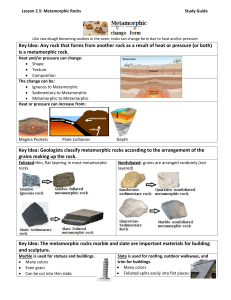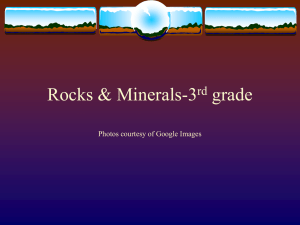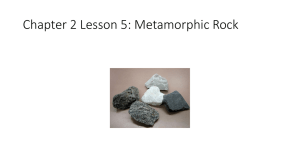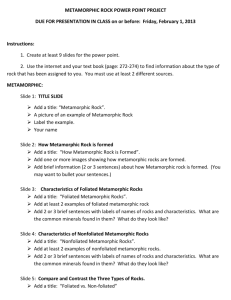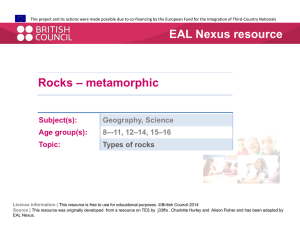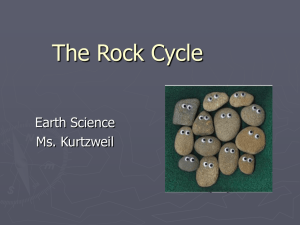metamorphic rocks
advertisement
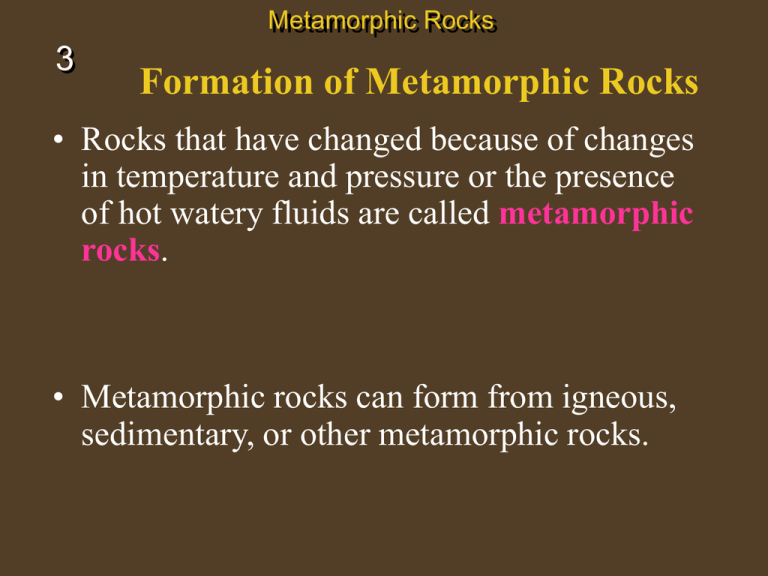
Metamorphic Rocks 3 Formation of Metamorphic Rocks • Rocks that have changed because of changes in temperature and pressure or the presence of hot watery fluids are called metamorphic rocks. • Metamorphic rocks can form from igneous, sedimentary, or other metamorphic rocks. Metamorphic Rocks 3 Heat and Pressure • In some places under the Earth’s surface, the heat and pressure are just right to cause rocks to melt and magma to form. • In other areas where melting doesn’t occur, some mineral grains can change by dissolving and recrystallizing—especially in the presence of fluids. Metamorphic Rocks 3 Heat and Pressure • Depending upon the amount of pressure and temperature applied, one type of rock can change into several different metamorphic rocks. • Each type of metamorphic rock can come from several kinds of parent rocks. Metamorphic Rocks 3 Heat and Pressure • The sedimentary rock shale will change into slate. • As increasing pressure and temperature are applied, the slate can change into phyllite, then schist, and eventually gneiss. Slate Metamorphic Rocks 3 Heat and Pressure • Schist also can form when basalt is metamorphosed, or changed, and gneiss can come from granite. Metamorphic Rocks 3 Hot Fluids • Most fluids that transform rocks during metamorphic processes are hot and mainly are comprised of water and carbon dioxide. • In the presence of hot, water-rich fluids, solid rock can change in mineral composition without having to melt. Metamorphic Rocks 3 Foliated Rocks • When mineral grains line up in parallel layers, the metamorphic rock is said to have a foliated texture. • Two examples of foliated rocks are slate and gneiss. Slate Metamorphic Rocks 3 Nonfoliated Rocks • In some metamorphic rocks, layering does not occur. • The mineral grains grow and rearrange, but they don’t form layers. • This process produces a nonfoliated texture. Two examples are marble and quartzite.

